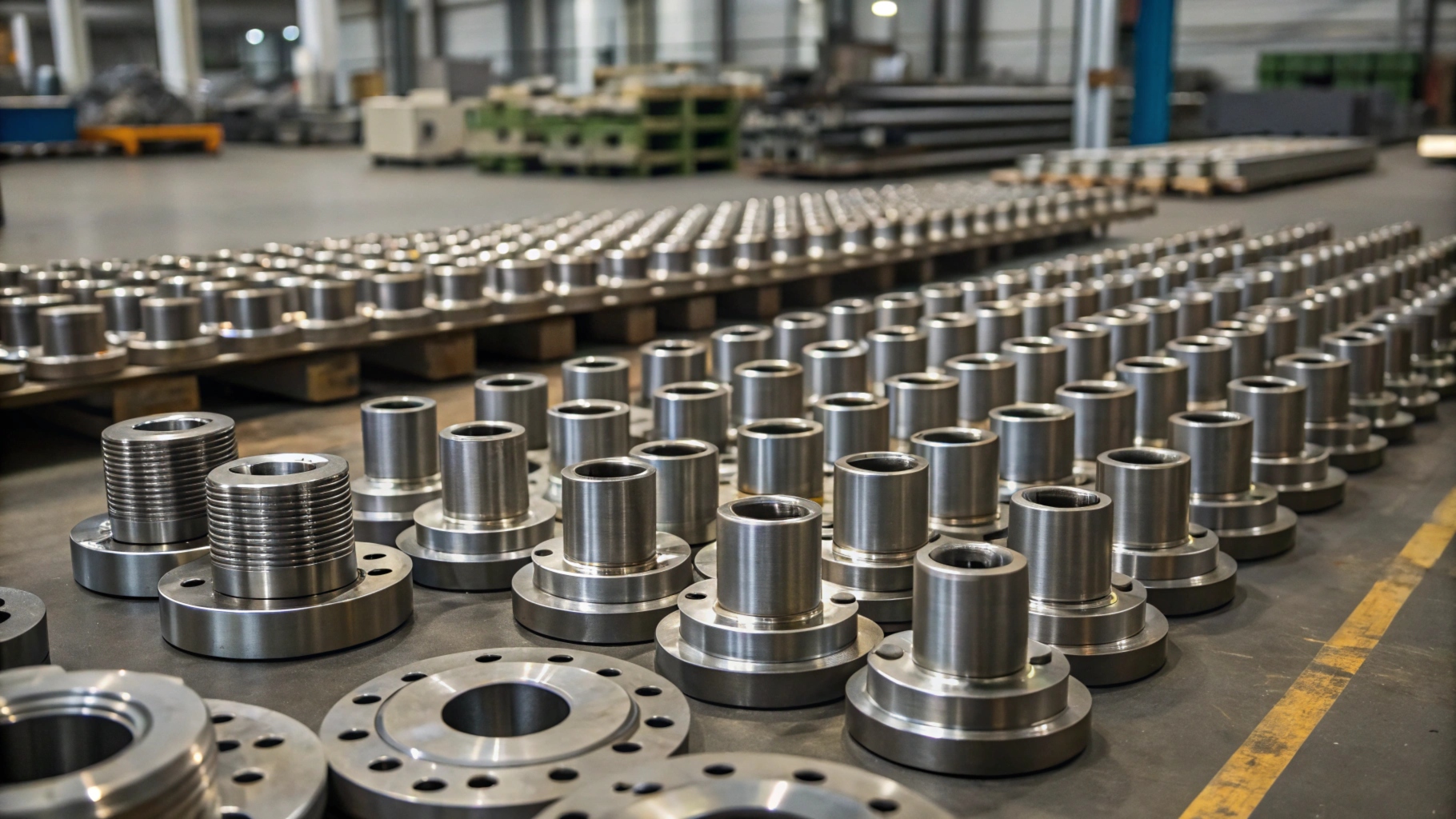
Problem: Choosing the best steel for CNC machining is complex.
Agitation: Mistakes can lead to wasted time and poor performance.
Solution: Learn how to select the right steel for your needs.
The best steel for CNC machining depends on the specific application, balancing factors like machinability, strength, and corrosion resistance. Common choices include:
-
Carbon Steel (e.g., 1018, 1045):
Ideal for general-purpose machining due to its excellent machinability and strength. Suitable for automotive and structural components. -
Stainless Steel (e.g., 304, 316):
Offers high corrosion resistance and durability, making it perfect for medical devices, aerospace, and food processing equipment. -
Tool Steel (e.g., D2, A2):
Known for hardness and wear resistance, it's ideal for cutting tools, molds, and dies. -
Alloy Steel (e.g., 4140, 4340):
Balances strength and toughness, making it suitable for high-stress applications like gears and shafts.
To select the best steel, consider the application’s requirements, such as strength, wear resistance, or environmental conditions.
Choosing the wrong steel can result in higher costs or failure in use. Keep reading to explore which steel is best for your needs.
Factors to Consider When Choosing Steel for CNC Machining?
Problem: Steel grades vary widely, making it hard to choose.
Agitation: This leads to confusion and potential project delays.
Solution: Focus on key factors like strength, machinability, and cost.
When selecting steel for CNC machining, key factors to consider include:
-
Material Strength and Hardness
These properties affect the durability and performance of the final product. -
Machinability
Essential for efficient processing, reduced tool wear, and smoother production. -
Corrosion Resistance
Crucial for applications exposed to moisture or chemicals. -
Heat Resistance
Important for components used in high-temperature environments. -
Intended Application
Match the steel grade to the specific requirements, such as carbon steel for strength or stainless steel for corrosion resistance. -
Cost and Availability
Ensure the material fits within your budget and aligns with project timelines.
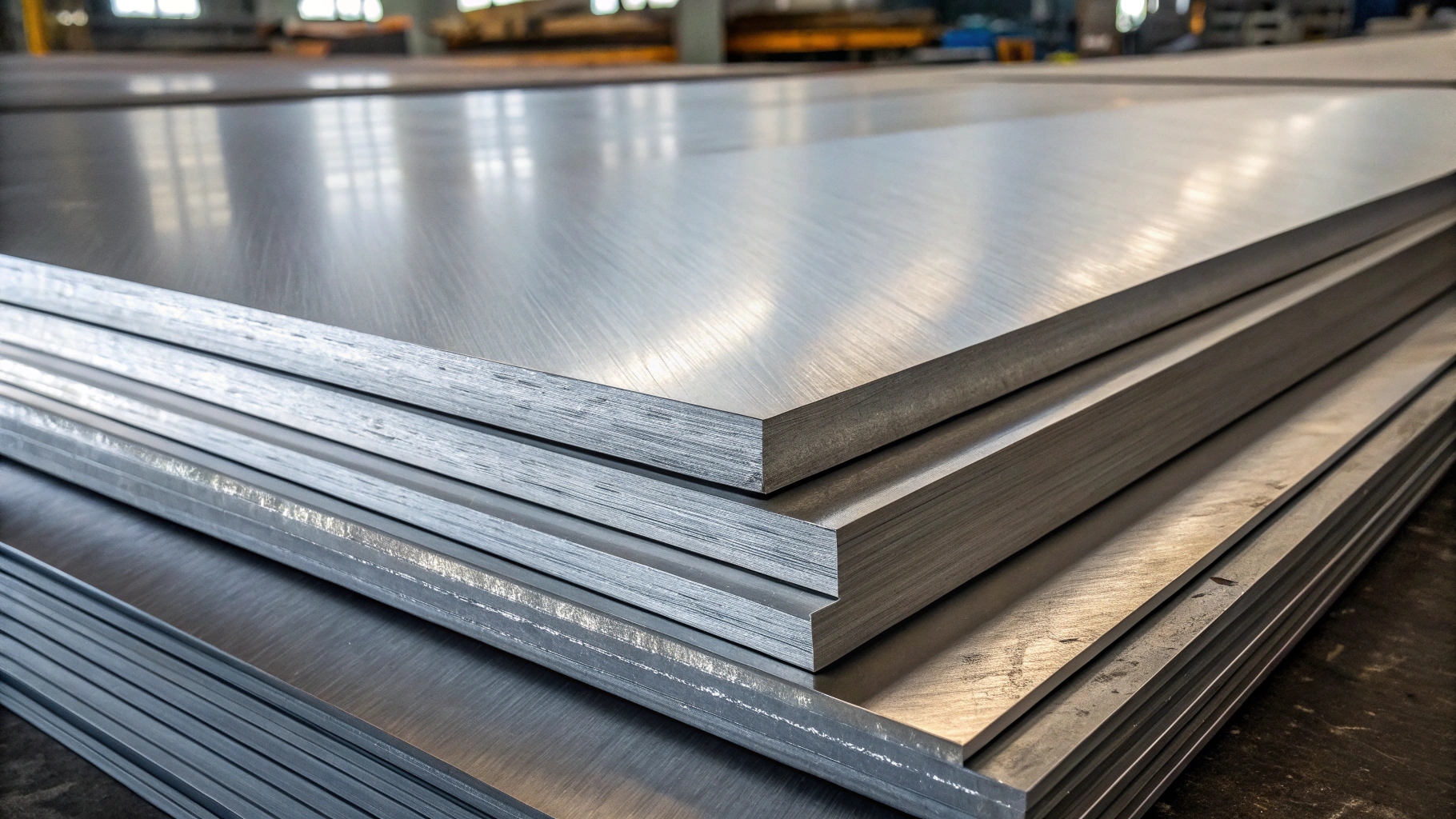
Dive Deeper: Key Factors to Assess
When selecting steel for CNC machining, understanding your requirements is critical. Here are the most important considerations:
Strength and Durability
The steel must withstand mechanical forces during use. Compare these tensile strength values:
| Steel Type | Tensile Strength (MPa) | Applications |
|---|---|---|
| Carbon Steel (AISI 1045) | 570-700 | Gears, shafts, machinery parts |
| Stainless Steel (AISI 304) | 500-700 | Medical devices, kitchen tools |
Machinability
Machinability affects production efficiency and surface finish. Free-machining steels, like AISI 1215, are easier to machine, but lower machinability steels like stainless steel need slower speeds and better tools.
Cost vs. Performance
Balance material cost with project needs. High-performance steels like tool steel are expensive but essential for heavy-duty applications.
Understanding these factors will guide you in selecting the right steel.
Top Steel Types for CNC Machining: A Quick Overview?
Problem: The variety of steel options can feel overwhelming.
Agitation: Selecting the wrong one wastes time and money.
Solution: Focus on popular steel types for machining.
The best steel for CNC machining depends on the specific application, balancing factors like machinability, strength, and corrosion resistance. Common choices include:
-
Carbon Steel
Widely used for its strength and affordability, ideal for general-purpose machining. -
Stainless Steel
Known for its corrosion resistance and versatility, suitable for medical, automotive, and aerospace industries. -
Tool Steel
Offers excellent hardness and wear resistance, perfect for cutting tools and molds. -
Alloy Steel
Combines strength, toughness, and resistance to extreme conditions, commonly used in heavy machinery. -
Mild Steel
Easy to machine and cost-effective, making it suitable for prototypes and non-critical components.
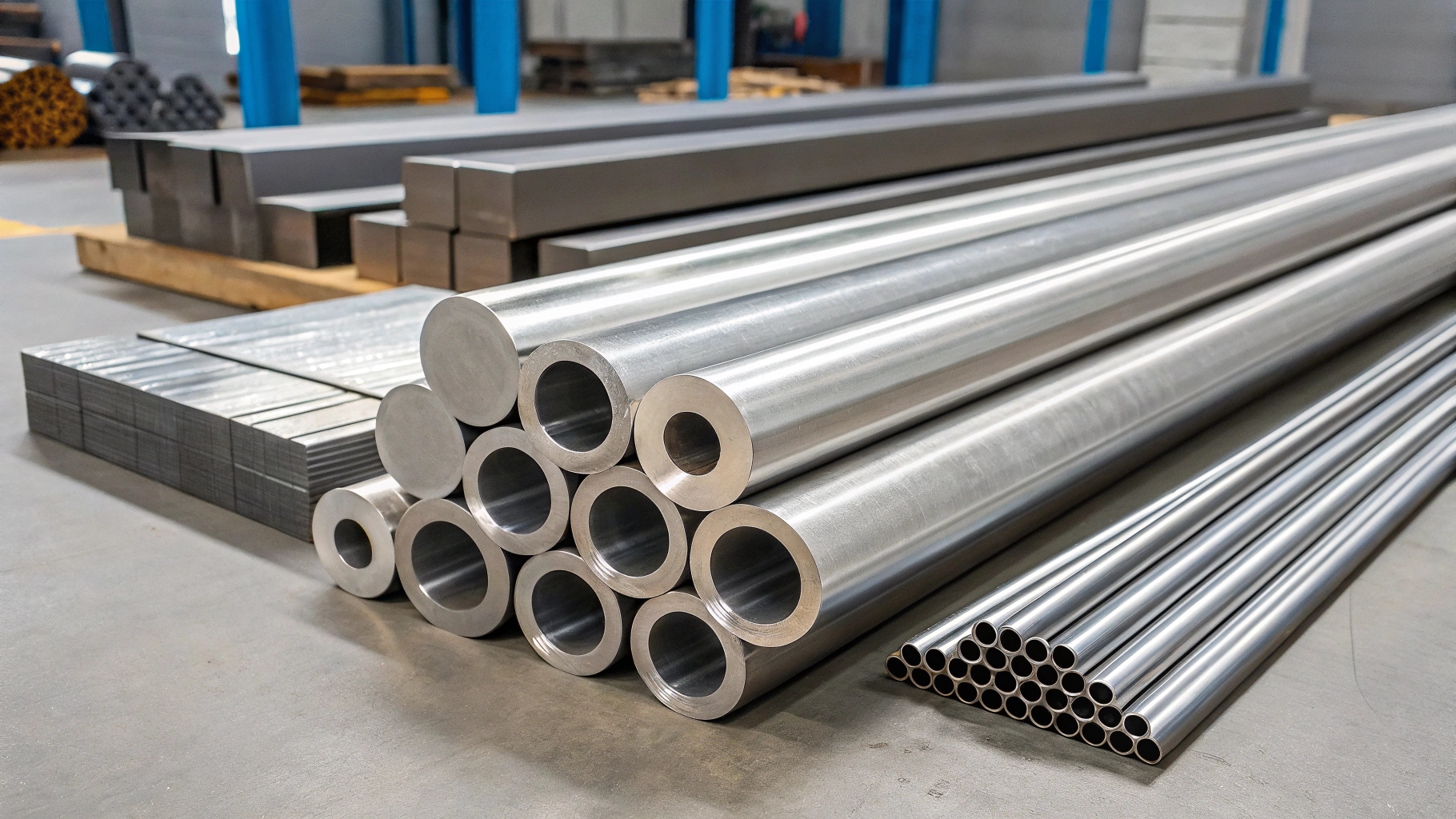
Dive Deeper: Breaking Down Popular Choices
Carbon Steel
Widely used for its strength and affordability. Common grades include AISI 1018 and 1045. These steels are excellent for components like bolts and fasteners.
Stainless Steel
Ideal for applications needing corrosion resistance. Grades like 304 and 316 are perfect for food-grade or medical tools.
Tool Steel
Known for hardness and wear resistance. D2 and A2 grades are commonly used for molds, dies, and cutting tools.
Alloy Steel
Combines multiple elements for enhanced performance. 4140 steel is a great choice for heavy-duty parts requiring strength and impact resistance.
By focusing on these types, you can streamline your selection process.
Comparing Carbon Steel and Stainless Steel for CNC Applications?
Problem: Carbon steel and stainless steel have unique benefits.
Agitation: Misunderstanding their differences leads to suboptimal choices.
Solution: Compare them to understand their strengths and limitations.
When selecting materials for CNC machining, both carbon steel and stainless steel offer unique advantages and are suited for different applications. Here's a comparison:
1. Machinability
- Carbon Steel:
Generally easier to machine, especially low-carbon grades (e.g., 1018). It requires less cutting force and tooling wear, making it cost-effective for high-volume production. - Stainless Steel:
More challenging to machine due to its toughness and work-hardening properties. Specific grades (e.g., 303) are optimized for machinability.
2. Strength and Hardness
- Carbon Steel:
High tensile strength and hardness, especially in higher-carbon grades (e.g., 1045). Ideal for parts requiring durability under stress. - Stainless Steel:
Offers comparable strength in certain grades (e.g., 304, 316), with added corrosion resistance.
3. Corrosion Resistance
- Carbon Steel:
Prone to rust and corrosion if not treated or coated, making it less suitable for humid or corrosive environments. - Stainless Steel:
Excellent corrosion resistance, particularly in grades like 316, which is ideal for medical, marine, and food-grade applications.
4. Cost
- Carbon Steel:
Generally more affordable due to its simpler composition and lower processing costs. - Stainless Steel:
More expensive because of the added chromium and nickel content that enhance corrosion resistance.
5. Applications
- Carbon Steel:
Used in automotive parts, machinery, and structural components where strength and cost are priorities. - Stainless Steel:
Preferred in medical devices, aerospace, food processing, and environments where corrosion resistance is essential.
Choose carbon steel for applications prioritizing cost and machinability, and stainless steel for projects requiring corrosion resistance and durability in challenging environments.
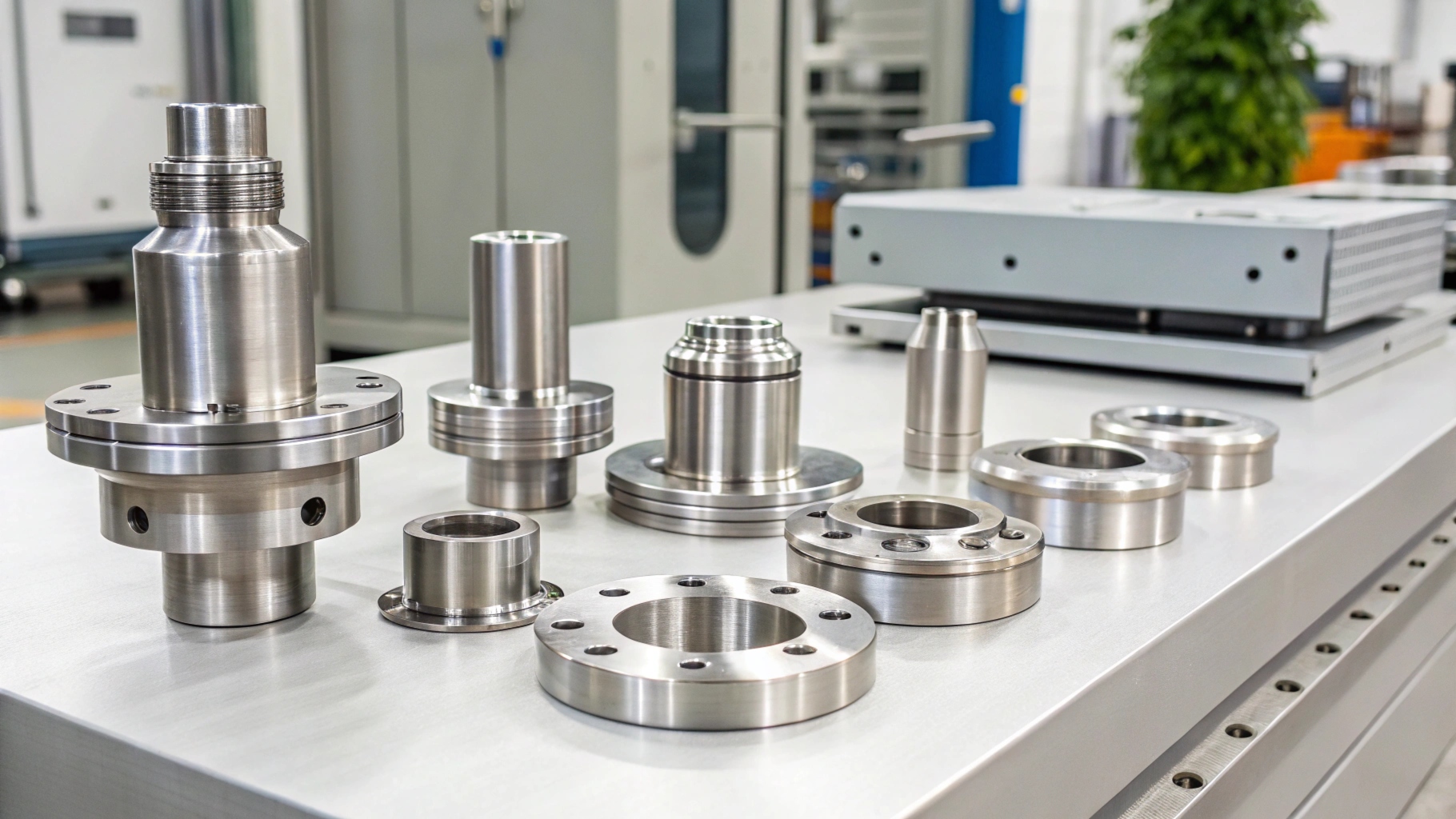
Dive Deeper: Head-to-Head Comparison
| Feature | Carbon Steel | Stainless Steel |
|---|---|---|
| Strength | High | Moderate to High |
| Corrosion Resistance | Low | Excellent |
| Machinability | Good | Moderate |
| Cost | Low | Higher |
Use Cases
- Carbon Steel: Structural parts, gears, and automotive components.
- Stainless Steel: Food processing, medical equipment, and marine applications.
Trade-offs
Choosing between them depends on the environment. For dry, controlled conditions, carbon steel is economical. For corrosive or wet environments, stainless steel is the better option.
Heat-Treated Steels: Enhancing Strength and Durability?
Problem: Raw steel may not meet application needs.
Agitation: Parts could fail under stress or wear.
Solution: Heat treatment can boost steel properties significantly.
Heat-treated steels are processed to improve their mechanical properties, such as strength, hardness, and wear resistance. Common heat treatments include:
-
Quenching and Tempering:
Increases hardness and strength by rapidly cooling the steel (quenching) and reducing brittleness through reheating (tempering). Ideal for tools, gears, and shafts. -
Annealing:
Softens steel, improving machinability and reducing internal stress. Common in preparation for forming or machining. -
Case Hardening (Carburizing):
Hardens the surface while keeping the core tough, suitable for parts like bearings and gears. -
Normalizing:
Refines the grain structure for enhanced toughness and strength, often used in structural components.
Heat-treated steels are versatile, offering tailored properties to meet the demands of various industries, including automotive, aerospace, and manufacturing.
Dive Deeper: How Heat Treatment Works
Common Methods
- Annealing: Softens the steel for easier machining.
- Hardening and Quenching: Increases hardness by heating and rapid cooling.
- Tempering: Balances hardness and ductility by reheating.
Benefits of Heat Treatment
| Property | Before Heat Treatment | After Heat Treatment |
|---|---|---|
| Hardness | Moderate | High |
| Wear Resistance | Moderate | High |
| Ductility | High | Moderate |
Examples of Heat-Treated Steels
- 4140 Alloy Steel: Ideal for automotive and industrial parts after quenching and tempering.
- D2 Tool Steel: Used in cutting dies and molds for its wear resistance.
Heat-treated steels offer tailored performance for demanding applications.
Best Applications for Different Steel Grades in CNC Machining?
Problem: Steel grades excel in specific applications.
Agitation: Using the wrong grade can lead to failure.
Solution: Match the grade to your project’s requirements.
Each steel grade has its ideal use case, ensuring optimal performance and cost efficiency.
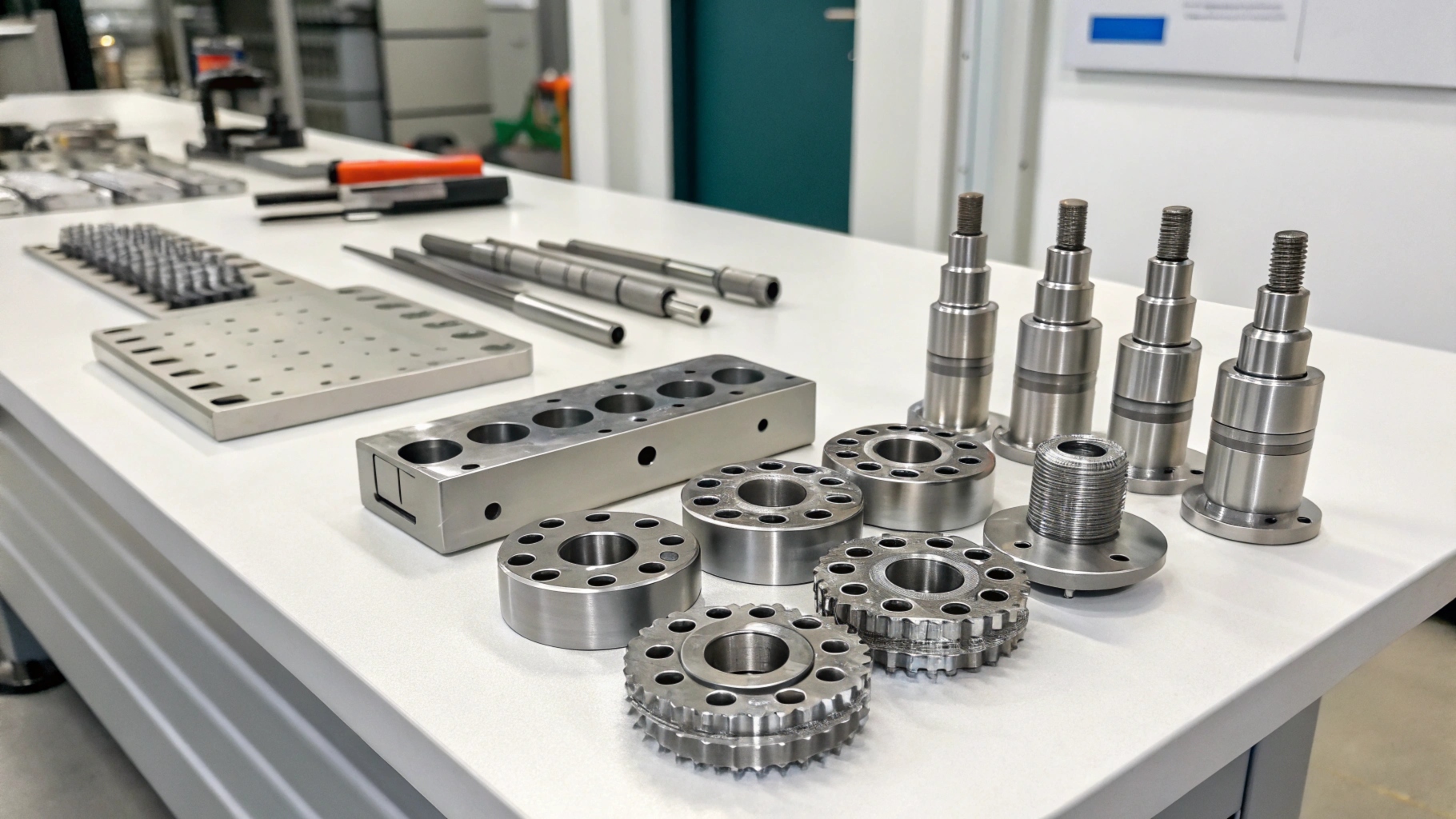
Dive Deeper: Application-Specific Recommendations
Industrial Equipment
- Carbon Steel (1045): Perfect for shafts and gears due to its strength and machinability.
Medical Devices
- Stainless Steel (316): Resists corrosion, ensuring hygiene and durability.
Cutting Tools and Dies
- Tool Steel (D2): Provides exceptional hardness and wear resistance.
Aerospace Components
- Alloy Steel (4140): Balances strength and weight for precision applications.
Comparison Table
| Industry | Recommended Steel Grade | Key Features |
|---|---|---|
| Automotive | 4140 Alloy Steel | High strength, impact resistance |
| Medical | 316 Stainless Steel | Corrosion resistance, biocompatibility |
| Machinery | 1045 Carbon Steel | Cost-effective, durable |
Selecting the right grade for your industry ensures your parts perform reliably.
Conclusion
Understanding steel properties and applications helps you choose the best material for CNC machining. Select wisely to maximize performance and minimize costs.

